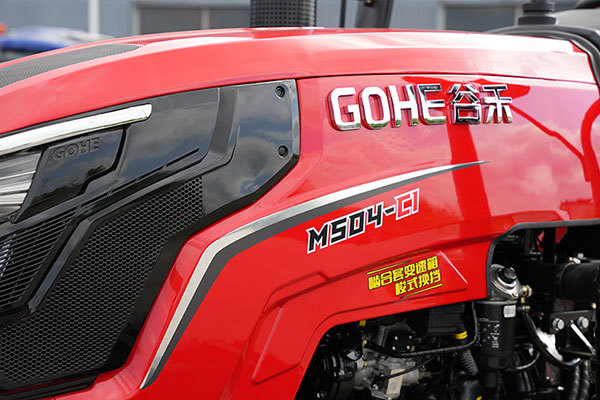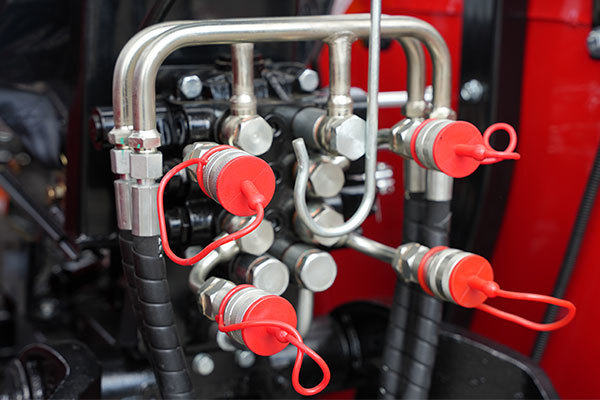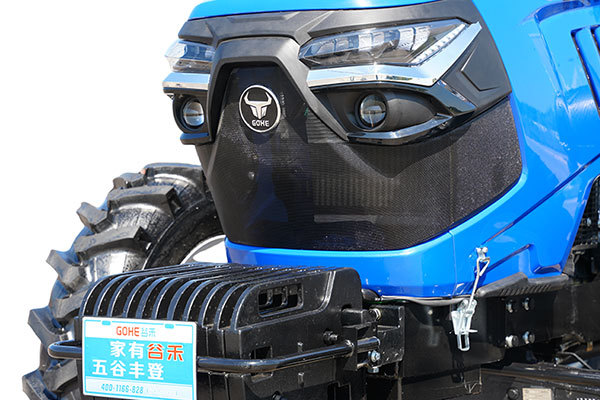The Invention History of Tractors
Release time:
2024-09-30
Since ancient times, many people have attempted to use mechanical force instead of human and animal labor for farming.
Since ancient times, many people have attempted to use mechanical force instead of human and animal labor for farming. But it was not until the 19th century when Europe entered the era of steam engines that the birth of powered agricultural machinery became possible.
The earliest steam powered tractors were invented by Alabart in France and R.C. Palvern in Illinois, USA in 1856 and 1873, respectively.
In the 1830s, research began on using steam powered vehicles to tow agricultural machinery for field operations. But at that time, the steam powered tractor (predecessor of the steam tractor) that could be produced was like a small locomotive. Even if it didn't get stuck in the field, it would still compact the soil and make it impossible to cultivate. In 1851, Farath and Smith of England first used steam engines to achieve mechanical farming in farmland. Some people see this as the beginning of agricultural mechanization, but at that time their method was to place the steam engine at the head of the field and use steel wire ropes to pull the plowshares plowing in the field from a distance. Later, with the advancement of steam engine manufacturing technology, miniaturized steam engines appeared, which were installed on the chassis of vehicles to drive the wheels, allowing them to drive agricultural machinery directly from the ground into the fields, thus giving birth to tractors. At that time, tractors were very similar to early steam powered cars, but with greater horsepower and slower driving speed.
The initial tractors were bulky, expensive, and inconvenient to use, often requiring several people to operate. They were suitable for farming on vast fields and were difficult for individual farmers to afford. In 1889, the Chada Engine Company in Chicago, USA, manufactured the world's first agricultural tractor using gasoline internal combustion engines - the "Baga" tractor. Due to its lightweight, easy to operate, and high work efficiency, the emergence of internal combustion engines laid the foundation for the promotion and application of tractors. At the beginning of the 20th century, countries such as Sweden, Germany, Hungary, and the United Kingdom almost simultaneously manufactured tractors powered by diesel internal combustion engines. During World War I, due to the war, labor shortages and rising agricultural product prices promoted the development of agricultural tractors. Between 1910 and 1920, there was fierce competition between tractors powered by steam engines and those powered by internal combustion engines, with the latter demonstrating greater superiority and gradually phasing out the former. Today's tractors all use diesel internal combustion engines.
On November 24, 1904, the "77" steam tractor underwent its first test and was later put into mass production. In 1906, Holt founded a tractor manufacturing company that also produced the world's earliest tracked tractor powered by a gasoline internal combustion engine. This tractor began mass production the following year and was the most successful tractor at the time. It became a reference for Britain to develop the world's first tank a few years later.
In the development of wheeled tractors, initially people widened the steel wheels to increase the landing area and reduce pressure, but the effect was not good. Later, they came up with the method of adding a rubber protective layer to the steel wheels. After the birth of car tires, solid and inflatable tires were successively used for tractors. But car tires are not entirely suitable for tractors, firstly because the grooves on car tires are too shallow and thin. Secondly, people have found that tractors perform better on soft ground when the tires are deflated compared to when the tires are fully inflated. In 1932, the American company Filtdown Tire and Rubber produced a large-sized high tread low-pressure inflatable rubber tire. This is the first type of tire truly suitable for agricultural tractors, which greatly improves the driving and traction performance of wheeled tractors.
By the late 1940s, tractors had replaced livestock as the main power source for farms in North America, Western Europe, Australia, and other regions. Since then, tractors have been widely used in Eastern Europe, Asia, South America, and Africa.
Related News





